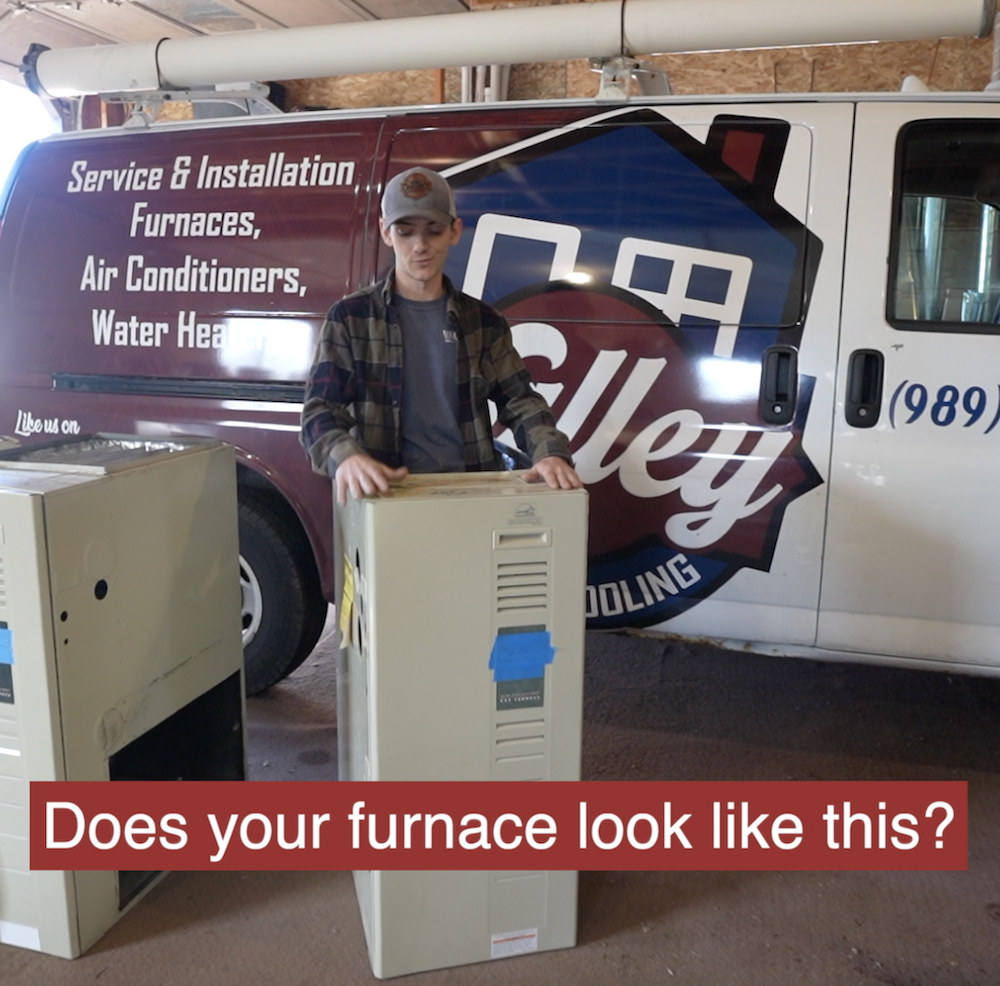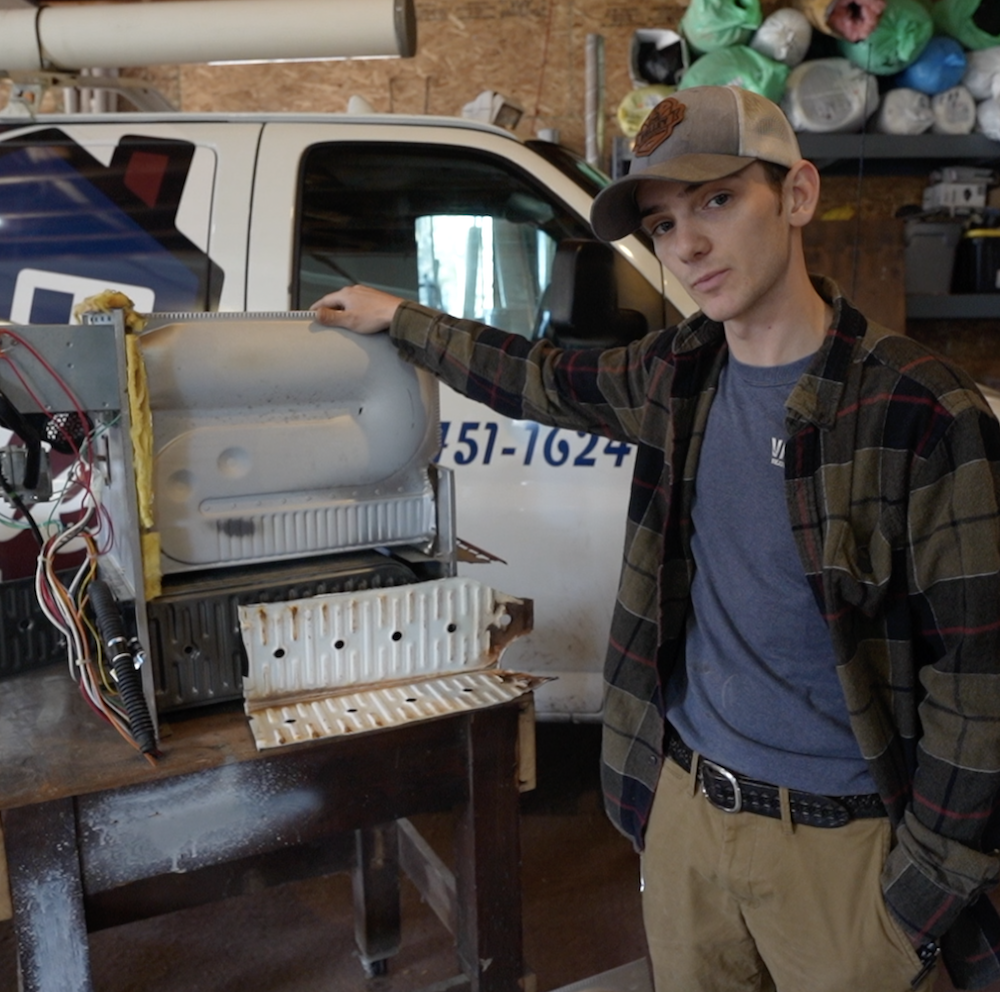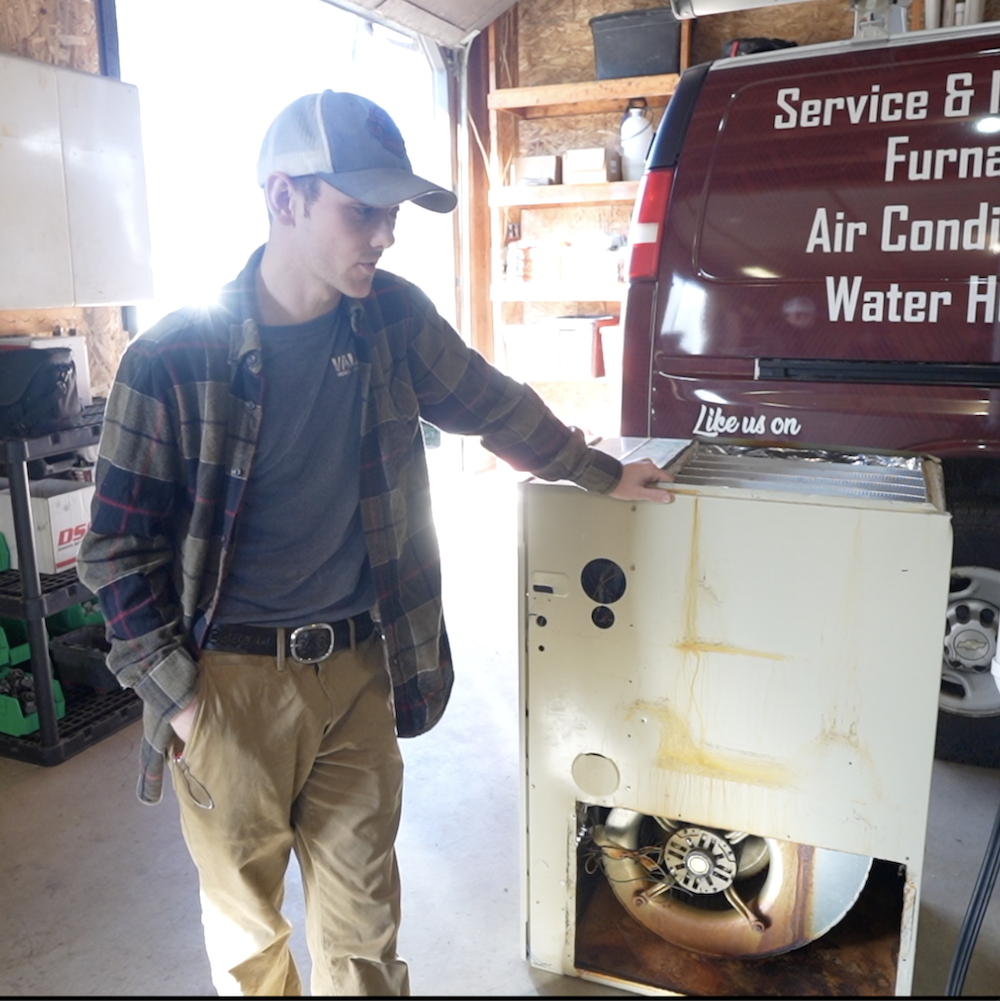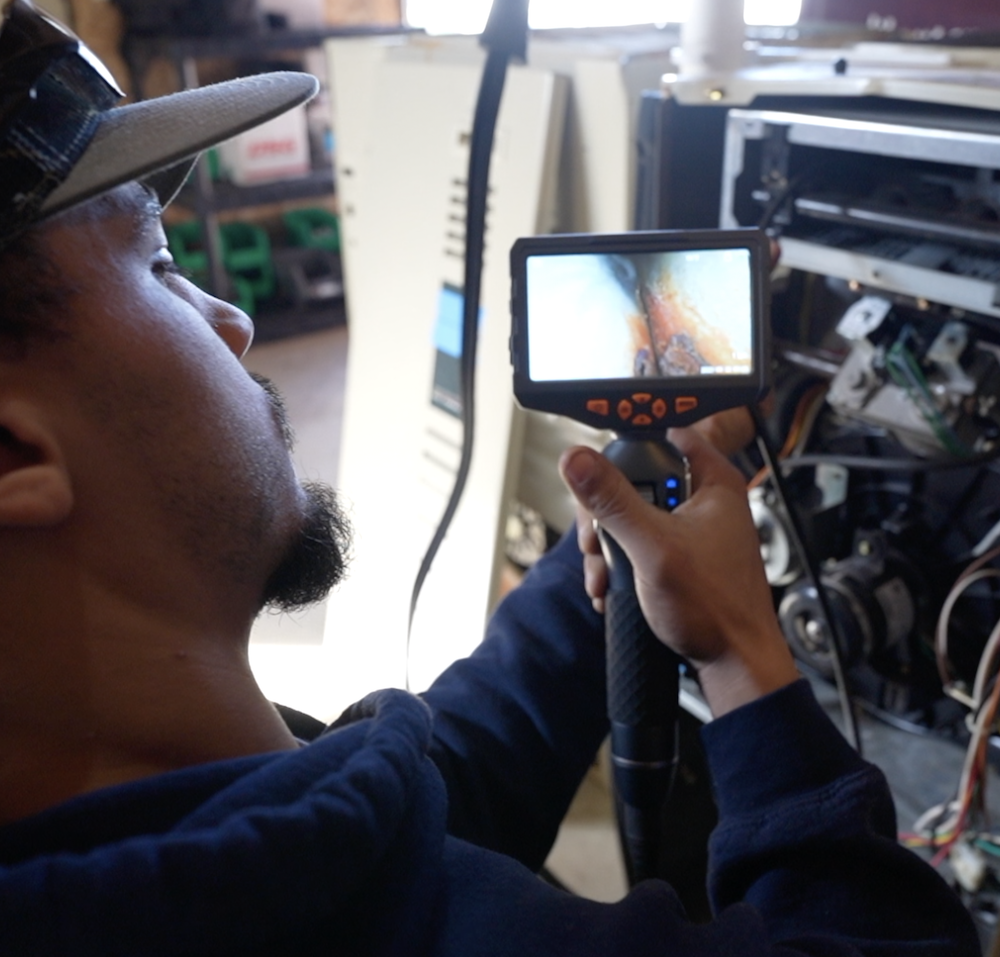The Worst Furnace To Have In Your Home

Today, I'm going to tell you why these are one of the worst and most common furnaces that we see around the Great Lakes Bay area here in Michigan. Click the video below to get a better look.
Furnaces that look like this were made from 1993 to 2011, and we see a ton of them all over the place. The issue with these furnaces is in the heat exchanger. You can see the primary heat exchanger where my hand is in the picture below, and the secondary is right below it - it's white with the holes and rust.

This is where the natural gas is burned, and the heat is transferred to the air. The secondary heat exchanger has a polypropylene coating that tends to break down over time. What it does is all this polypropylene flakes off and it travels to the collector and it plugs up the drains, plugs up the collector, and it essentially stops your gas from being able to travel through the heat exchanger. So generally what happens when your gas is not flowing through your heat exchangers, it's going to overheat. Normally that's going to trip the roll out switch, this is basically think of it as a thermostat when it gets too hot it's going to open up and shut the furnace down. If you have a roll out switch on this furnace or any other furnace, you are having some sort of issue.
Generally that's going to mean it's overheating and the flames are coming back out of the front of the Furnace. We usually only see that in the more extreme scenarios but this roll out switch will trip once your secondary starts to break down.
When I go on a service call and I look at one of these furnaces, the first thing that I'm going to do is I'm going to put my hand on top of the furnace. If it's really hot, I know that we're starting to have some roll out happening. We're just not getting that heat moving through the furnace that's a really common common sign.
Another sign is rust in the blower. It's probably been leaking for years so that water is leaking out of the secondary heat exchanger. See rust in picture below.

Another sign - oddly enough one of the easiest ways for us to diagnose this - is smell. So there's a sweet but accurate smell that you only get with these furnaces. Sometimes I can smell them in the mechanical room when I walk up to the furnace. Sometimes I can smell them in the vent if I go outside or I can smell them in the drain it's very distinct. But you know it if you smell it so if you have a very strange sour odor near your furnace that's another good indication as well.
So if you have any of these signs or symptoms or even have this type of furnace it's a really good idea to have it checked out. Normally, what we'll do and what other people should do is you should have a combustion analysis to check and see how the furnace is burning. If there's any carbon monoxide in the flu you can also inspect it with a camera you can stick this up the furnace and and look for any any signs of water things like that.

If you have somebody that you trust give them a call if you don't have anyone give us a call.